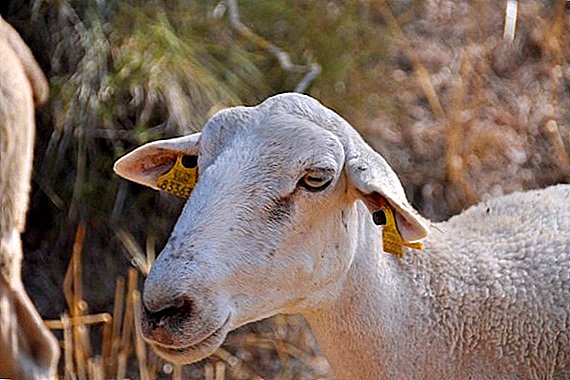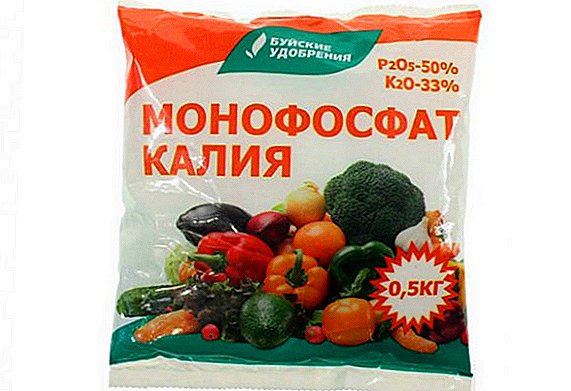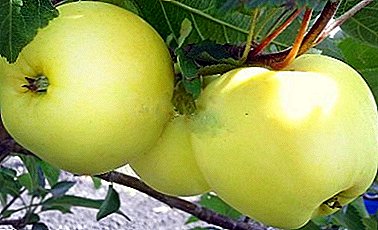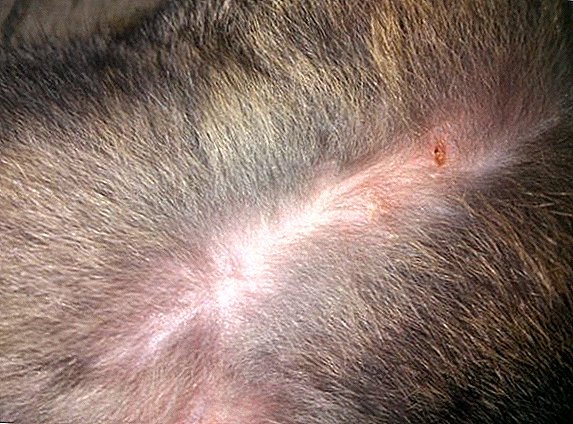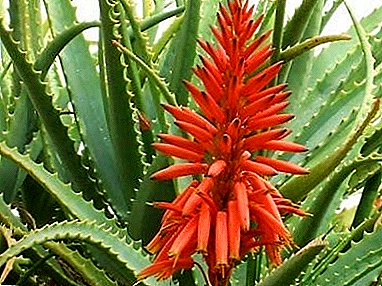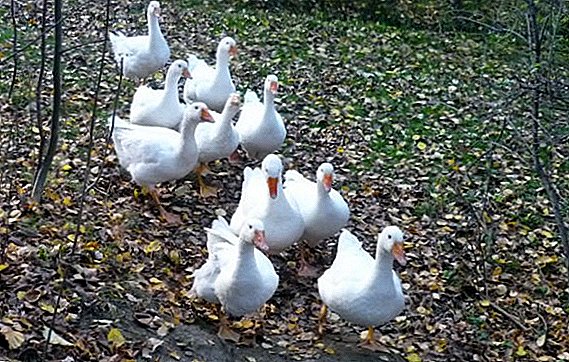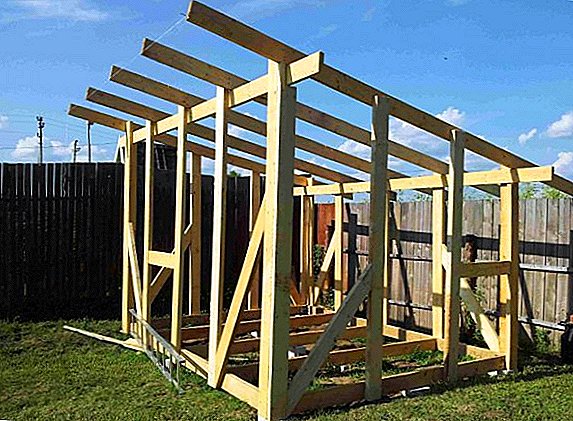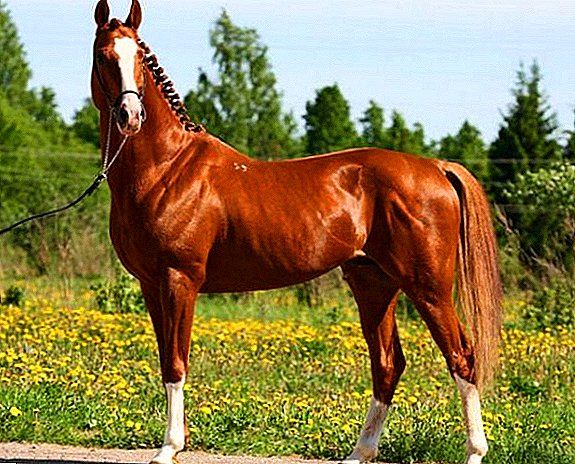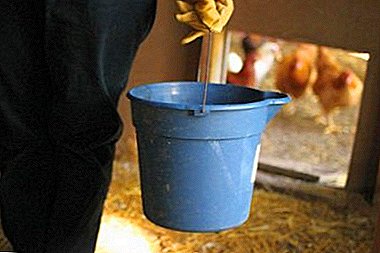
In order to keep chickens successfully, it is necessary to keep the hen house clean, so that the pathogens and parasite cannot affect the health of the birds.
However, simple restoring order is not enough and the room should be disinfected once every two months. Read more about chicken coop disinfection in our article.
What it is?
The concept of "disinfection" includes the destruction of pathogens and their waste products, through comprehensive measures.
The two main types are:
 prophylacticwhich is carried out with the purpose of preventing morbidity;
prophylacticwhich is carried out with the purpose of preventing morbidity;- focal - used in the focus of infection. It can also be divided into:
- current: characteristic mainly for medical institutions, used to destroy and prevent the spread of microorganisms;
- final - is carried out when disinfecting the source of infection.
Another disinfection in the hen house at home can be divided into two types:
- Wet - when the solution is sprayed with the surface of special devices.
- Aerosol - when through the generators of cold fog the same solution is split into smaller drops and most fully contacts with the surfaces.
When do I need to process?
As mentioned earlier, as a prevention of diseases in the chicken coop, disinfection is carried out once every two months and general cleaning 1 time per year. However, if chickens have already been infected, then to prevent the spread, it is also necessary to treat the room.
IMPORTANT! In addition to the parasites and ticks that inhabit the coop, microbes that cause outbreaks of infections can become its inhabitants. Clothing and shoes should be handled before visiting the hen house.
Facilities
Means for disinfection in the chicken coop can be purchased in specialized stores or manufactured independently. They are divided into chemical and organic.
Read labels and Remember that chlorine is dangerous for respiratory organs, and formalin has carcinogenic properties.
In the modern market there is a huge range of products, and accordingly the opportunity to purchase goods that are easy to use and with the necessary characteristics. So, consider the most popular disinfectants.
Iodine checker
 It is a bottle with a combustible gasket and a wick, inside of which there is the drug "Cliodesic" in powder. When igniting the iodine block to disinfect the chicken coop, there is enough time to leave the premises. A pair of crystalline iodine of dark colors begins to stand out. In addition to surfaces, the air is also subjected to rehabilitation. The operation can be carried out in the presence of a bird.
It is a bottle with a combustible gasket and a wick, inside of which there is the drug "Cliodesic" in powder. When igniting the iodine block to disinfect the chicken coop, there is enough time to leave the premises. A pair of crystalline iodine of dark colors begins to stand out. In addition to surfaces, the air is also subjected to rehabilitation. The operation can be carried out in the presence of a bird.
The main advantage of this tool is the lack of resistance of microorganisms to it.
Cost: depending on the volume varies from 70 to 300 rubles.
Smoke bomb
 Just like the iodine smoke box is set on fire and fills the room. Thus, within a few hours, the disinfectant penetrates into the most inaccessible places in the hen house. The substances that fill it are varied, from sulfuric acid to essential oils.
Just like the iodine smoke box is set on fire and fills the room. Thus, within a few hours, the disinfectant penetrates into the most inaccessible places in the hen house. The substances that fill it are varied, from sulfuric acid to essential oils.
The downside is the mandatory removal of poultry from the hen house. and that after use, airing is necessary for several hours, or even days.
The undoubted advantage is the concomitant destruction of fungi and mold.
Cost: depends on the filler and volume and ranges from 30p per package.
Lime
 How to disinfect the chicken coop at home with lime?
How to disinfect the chicken coop at home with lime?
If we talk about bleach, then its use can be dangerous due to the fact that it is difficult to calculate the desired concentration.
Because of what you can harm the pets, because, as noted above, chlorine is toxic.
Cost: from 150 rubles for 20 kg.
I would also like to separately highlight several self-made tools:
 Potassium permanganate and hydrochloric acid in a ratio of 1: 5 are placed in a vessel with a wide opening.
Potassium permanganate and hydrochloric acid in a ratio of 1: 5 are placed in a vessel with a wide opening.This tool is left in the hen house for half an hour. After application, airing is required.
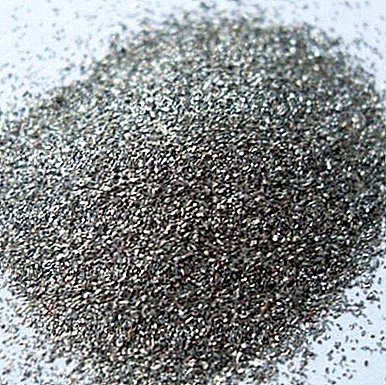 For every 20 m3: 1 g of aluminum powder and 10 g of crystalline iodine are mixed in a ceramic dish and a half liter of water.
For every 20 m3: 1 g of aluminum powder and 10 g of crystalline iodine are mixed in a ceramic dish and a half liter of water.This tool is a home analogue smoke bombs. However, it cannot be argued that it fully replaces the purchase option. The bird can not be removed from the premises, however, it is necessary to air after the procedure.
Holding
How to conduct disinfection in the hen house? If, nevertheless, for some reason a disinfection specialist cannot be called in, the sanitation is carried out independently.
Training
The first thing to remember about personal safety and have a special protective suit, rubber gloves and a respirator.
Also for cleaning the chicken coop, you must have a separate cleaning equipment: brush, broom, dustpan, mop, rag.
Washing
Before the disinfection stage, cleaning is required.
- To do this, first of all, litter and waste products of chickens are removed.
- Then all corners and fissures from web, dust and old lime layer are swept over.
- All metal sections are ignited, for example, with a blowtorch.
- After that, you can proceed to wet cleaning.
ATTENTION! Try not to use strong detergents so as not to harm the pets. You can add apple cider vinegar to the water.
Disinfection
The choice of means and the way that the process will take place lies on the shoulders of the owner. However, it is worth noting that in addition to the rehabilitation of air and surfaces from harmful microorganisms, you must also take care of parasites, ticks and fleas. For this, walls, stone and concrete surfaces are treated with slaked lime.
Processing in the presence of a bird
 When using non-toxic and gentle disinfectants, you can carry out the procedure of disinfecting the coop in the presence of poultry.
When using non-toxic and gentle disinfectants, you can carry out the procedure of disinfecting the coop in the presence of poultry.
But, if there is no confidence in the preparation for disinfecting the chicken coop, it is better to remove chickens from the room and then ventilate.
Although most modern means allow the presence of chickens, for example iodine bomb.
What to do after it?
After disinfection, it is necessary to wash the feeders, drinking bowls and perches. This is necessary to remove residual solution and / or dangerous components of the product, since contact with them in chickens leads to poisoning.
And, of course, airing. Here the principle works: the longer the better. But at least 1-2 hours it should be open and pets should not run.
Invite a specialist or do yourself?
Inviting a specialist for disinfection, there is confidence in the result. Such organizations have the necessary equipment and proven drugs. The procedures themselves will be carried out in accordance with SanPiN.
However call disinfector costly, and in view of the fact that this should be done every two months, it will completely fly into a "round penny". For this service will have to pay about 2000 rubles.
However, do not be upset, self-processing can and should learn. The main difficulty lies in the correct calculations of the concentration of a substance. But this is easily solved. Since, together with the original packages, as a rule, instructions are attached with a clear indication of the proportion for a given volume of the room.
And finally, I would like to give advice. To save the budget and improve the sanitary situation in the hen house, you can call a specialist of this profile once a year during the general cleaning. And every two months to cope on their own. Keep clean, and pets do not have to suffer from various diseases.


 prophylacticwhich is carried out with the purpose of preventing morbidity;
prophylacticwhich is carried out with the purpose of preventing morbidity; Potassium permanganate and hydrochloric acid in a ratio of 1: 5 are placed in a vessel with a wide opening.
Potassium permanganate and hydrochloric acid in a ratio of 1: 5 are placed in a vessel with a wide opening. For every 20 m3: 1 g of aluminum powder and 10 g of crystalline iodine are mixed in a ceramic dish and a half liter of water.
For every 20 m3: 1 g of aluminum powder and 10 g of crystalline iodine are mixed in a ceramic dish and a half liter of water.